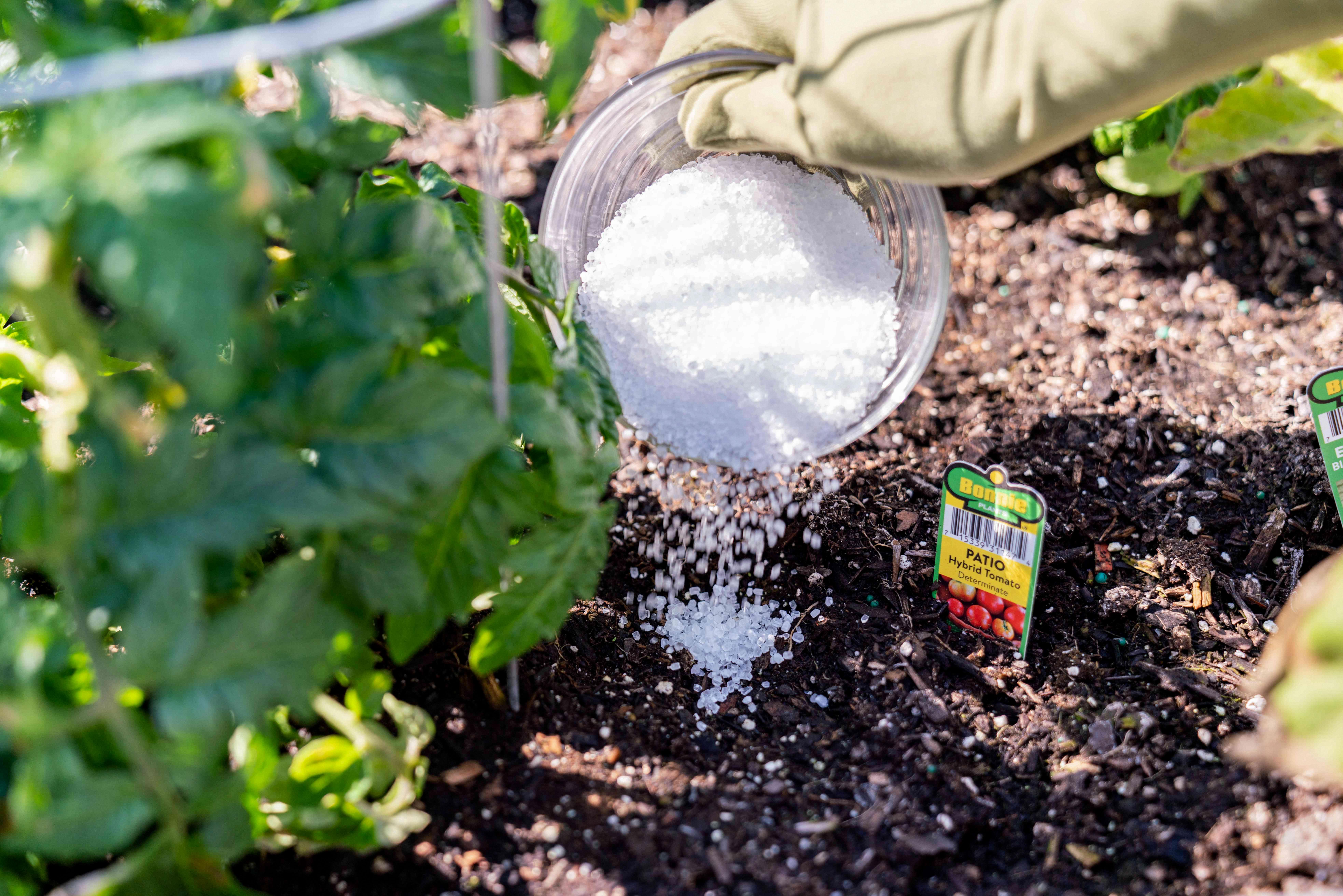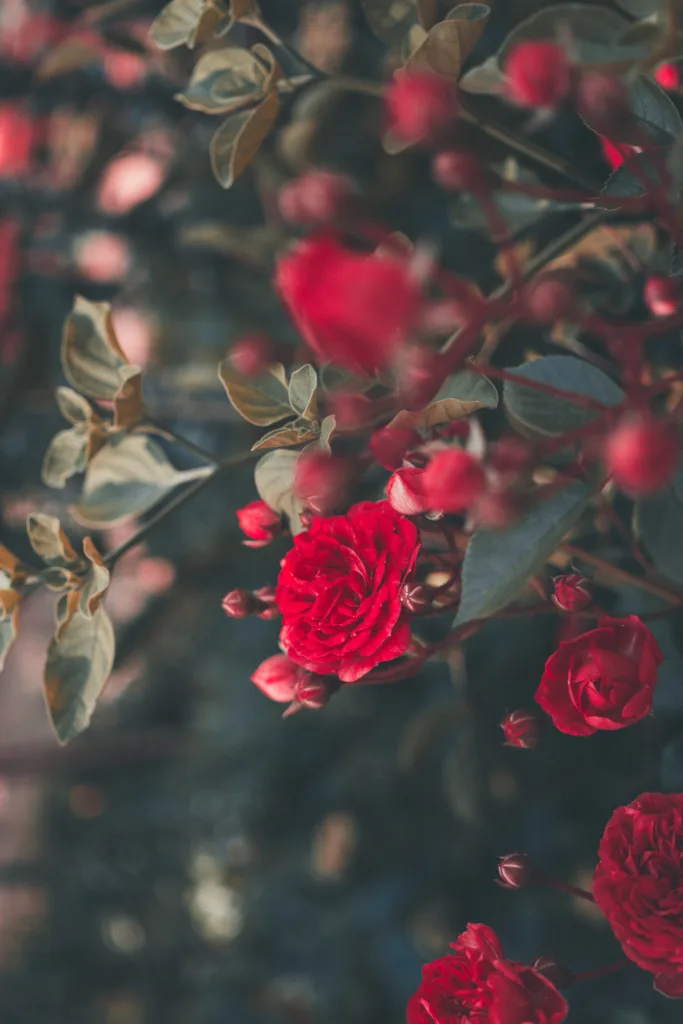Epsom salt is a popular DIY fertilizer for outdoor and indoor plants. Many gardeners swear by its benefits, claiming that it improves plant growth and overall health. However, not all plants respond positively to Epsom salt, and it’s important to know which ones to avoid using it on.
While Epsom salt has been shown to boost the magnesium and sulfur content of soil, horticulture experts say it should only be used on plants with known deficiencies in those nutrients. Using it on plants that don’t need it can actually do more harm than good.
So, which plants don’t like Epsom salt? Let’s take a look:
1. Native plants and wildflowers: Native plants are well-adapted to their natural environments and have specific nutrient requirements. Adding Epsom salt to the soil can disrupt the natural balance and potentially harm these plants. It’s best to leave them be and let nature take its course.
2. Acid-loving plants: Epsom salt can raise the pH level of soil, making it less acidic. This can be detrimental to plants that thrive in acidic conditions, such as azaleas, rhododendrons, and blueberries. If you have these acid-loving plants in your garden, it’s best to avoid using Epsom salt to prevent any adverse effects.
3. Succulents and cacti: These desert plants have unique water and nutrient requirements. They are adapted to survive in low-nutrient environments, so using Epsom salt on them can disrupt their natural balance and potentially harm their delicate root systems. Stick to a well-draining soil mix specifically formulated for succulents and cacti.
It’s important to note that while some plants may not benefit from Epsom salt, others can greatly benefit from its use. Here are a few plants that do benefit from Epsom salt:
1. Pepper plants: Peppers need extra magnesium, especially if you grow them in pots. Adding a small amount of Epsom salt to the soil can help provide this essential nutrient and promote healthy growth.
2. Roses: Rose bushes benefit from the magnesium in Epsom salt. While blooming, rose bushes can suffer from a lack of magnesium, causing a magnesium deficiency. Adding Epsom salt to the soil can help alleviate this deficiency and promote bigger and more vibrant blooms.
3. Tomato plants: While some Epsom salt can benefit vegetables and can help increase the flavor profile, too much can lead to a condition called blossom end rot. This is a common problem in tomatoes where the bottom of the fruit turns black and rot. It’s best to use Epsom salt sparingly on tomato plants to avoid this issue.
While Epsom salt can be a useful fertilizer for certain plants, it’s important to use it with caution. Only apply it to plants with known deficiencies in magnesium and sulfur, and avoid using it on plants that have specific nutrient requirements or are adapted to low-nutrient environments. Always remember to follow the recommended dosage and consult a horticulture expert if you have any doubts.
Can Epsom Salt Go On All Plants?
Epsom salt should not be used on all plants. While it does contain magnesium and sulfur, which can be beneficial for plant growth, it should only be used on plants that have known deficiencies in these nutrients. Applying Epsom salt to plants that do not require additional magnesium or sulfur can actually harm them and disrupt their nutrient balance.
Here are some key points to consider:
1. Epsom salt is primarily used as a source of magnesium (Mg) and sulfur (S) for plants. These nutrients are essential for plant development and play a role in various metabolic processes.
2. However, not all plants require additional magnesium or sulfur. Most soils naturally contain sufficient levels of these nutrients, and excessive amounts can lead to imbalances in the soil and hinder plant growth.
3. Before applying Epsom salt, it is important to test the soil to determine if there is a deficiency in magnesium or sulfur. Soil testing kits are available at garden centers or through agricultural extension offices.
4. Plants that commonly benefit from Epsom salt include magnesium-loving crops like tomatoes, peppers, and roses. These plants tend to exhibit symptoms of magnesium deficiency, such as yellowing leaves with green veins.
5. When applying Epsom salt, it is recommended to follow the recommended dosage and application instructions provided by the manufacturer. Applying too much Epsom salt can be harmful to plants and may lead to nutrient imbalances.
6. It is worth noting that Epsom salt is not a cure-all for plant problems. It should be used as a supplement to a well-balanced fertilizer and proper cultural practices, such as adequate watering and sunlight.
Epsom salt can be beneficial for plants with known deficiencies in magnesium or sulfur. However, it should not be used on all plants indiscriminately. Soil testing and proper dosage are essential to ensure its effective and safe use.

What Plants Thrive In Epsom Salts?
There are several plants that thrive when treated with Epsom salts. Here are three examples:
1. Pepper plants: Peppers require additional magnesium, especially when grown in pots. Epsom salts, which contain magnesium sulfate, can provide this essential nutrient. By adding Epsom salts to the soil or spraying a solution onto the leaves, you can help promote healthy growth and improve the overall health of your pepper plants.
2. Roses: Epsom salts can also benefit rose bushes. The magnesium in Epsom salts helps to enhance the plant’s ability to absorb nutrients, resulting in improved growth and blooming. Adding Epsom salts to the soil around rose bushes can encourage vibrant, beautiful blooms.
3. Tomato plants: While some Epsom salt can be beneficial for tomato plants, it’s important not to overdo it. Excessive use of Epsom salts can lead to a condition called blossom end rot, where the bottom of the tomato fruit becomes black and rots. However, when used in moderation, Epsom salts can help increase the flavor profile of tomatoes and improve overall plant health.
Pepper plants, roses, and tomato plants are three examples of plants that can benefit from the use of Epsom salts. However, it’s crucial to follow proper dosage instructions and avoid overuse to avoid negative effects on plant health.
Do Hydrangeas Like Epsom Salt?
Hydrangeas can benefit from the use of Epsom salt. Epsom salt is essentially magnesium sulfate, and it can help improve the health and appearance of hydrangeas in several ways:
1. Soil pH: Hydrangeas are known for their ability to change flower color based on the pH of the soil. Epsom salt contains sulfur, which can help lower the pH of the soil, making it more acidic. This is particularly beneficial for blue hydrangeas, as they thrive in acidic soil.
2. Magnesium supply: Epsom salt is rich in magnesium, an essential nutrient for plants. Magnesium plays a crucial role in chlorophyll production, which is responsible for the green color in leaves. By applying Epsom salt, you can ensure that your hydrangeas have an adequate supply of magnesium, which can enhance the color and overall health of the foliage.
3. Nutrient absorption: Magnesium is also important for the uptake and utilization of other nutrients by plants. By providing a source of magnesium through Epsom salt, you can help improve the nutrient absorption and overall nutrient balance of your hydrangeas, leading to healthier growth and better blooming.
To use Epsom salt on hydrangeas, it is recommended to dissolve about 1 tablespoon of Epsom salt in a gallon of water and apply it to the soil around the base of the plant. This can be done once or twice a month during the growing season. It’s important to note that Epsom salt should not be overused, as excessive magnesium can inhibit the uptake of other nutrients. It’s always best to follow the recommended application rates and consult a gardening expert if you have any concerns.
Do Roses Like Epsom Salt?
Roses can benefit from the use of Epsom salt. Epsom salt, also known as magnesium sulfate, can provide essential nutrients to roses and help improve their overall health and appearance. Here are some reasons why roses like Epsom salt:
1. Magnesium supplementation: Epsom salt is rich in magnesium, which is a vital nutrient for plants, including roses. Magnesium plays a crucial role in chlorophyll production, which is necessary for photosynthesis and overall plant growth. By adding Epsom salt to the soil or as a foliar spray, roses can absorb the magnesium they need to thrive.
2. Improves nutrient absorption: Magnesium deficiency is a common problem in roses, and it can lead to yellowing leaves with green veins, stunted growth, and reduced flowering. Epsom salt can help alleviate this deficiency by enhancing the absorption of other essential nutrients, such as nitrogen, phosphorus, and potassium. This improves overall plant health and promotes better blooming.
3. Enhances flower color and fragrance: Magnesium plays a role in the synthesis of pigments and aromatic compounds in roses. By providing an adequate supply of magnesium through Epsom salt, you can enhance the color intensity of rose flowers and intensify their fragrance. This can result in more vibrant and visually appealing blooms.
4. Prevents and treats certain plant diseases: Epsom salt has been found to have antifungal properties, which can help prevent and treat certain plant diseases that commonly affect roses, such as black spot and powdery mildew. By regularly applying Epsom salt to the soil or as a foliar spray, you can create an unfavorable environment for these fungal pathogens and protect your roses from infections.
When using Epsom salt on roses, it is important to follow proper application guidelines. Generally, you can dissolve 1 tablespoon of Epsom salt in 1 gallon of water and apply it to the soil around the base of the rose bush. Alternatively, you can mix the same ratio and use it as a foliar spray, making sure to thoroughly coat the leaves. It is recommended to apply Epsom salt to roses every 4-6 weeks during the growing season.
Remember that while Epsom salt can be beneficial for roses, it should not be used as a substitute for a well-balanced fertilizer. Roses also require other essential nutrients, such as nitrogen, phosphorus, and potassium, which can be provided through a regular fertilization routine.

Conclusion
While Epsom salt can be beneficial for certain plants, it should only be used on plants with known deficiencies in magnesium and sulfur. Pepper plants, rose bushes, and tomato plants are three examples of plants that can benefit from the use of Epsom salt. Peppers require extra magnesium, especially when grown in pots. Roses benefit from the magnesium in Epsom salt, as it can help prevent magnesium deficiencies during blooming. However, it is important to note that too much Epsom salt can lead to blossom end rot in tomato plants. Epsom salt can be a useful supplement for plants, but it should be used in moderation and only when necessary.
